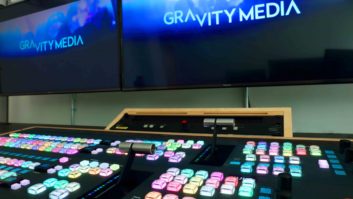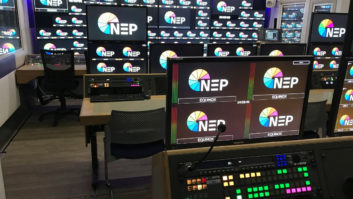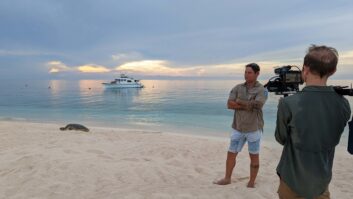The Covid-19 pandemic halted production of ITV’s Emmerdale on 20th March. But on 20th May, a phased return to recording was initiated with stringent health and safety measures in place to protect cast and crew.
“All scripts and stories will adhere to the government guidelines and medical advice at the time of production,” emphasises senior production manager, Nader Mabadi. “If the guidance was to change, we would consider the impact on our team and the story, before retrospectively amending the scripts. We are playing stories that allow for some latitude to embellish, it’s easy to turn a ‘hurtful look’ into a ‘slap’, for example.”
Although adhering to all the guidelines, Mabadi says that the content will not expressly acknowledge Covid-19. “Some of these will be obvious and others hidden through cuts and camera illusions. We try to tell human stories from our society and sometimes that means taking on a topical issue. Any references would go through a compliance and negative check. We have a duty as a broadcaster to behave responsibly, respectfully and lawfully.”
New schedule
The shooting schedule calls for a slight reduction in episodes from the pre-lockdown timetable. Previously, 13-14 episodes were completed within the two-week production cycle, at present that has been cut to 12.
Mabadi reports that the time frame for shooting an episode remains much the same, although less is being completed each day in order to maintain adherence to guidelines. “We have editorial measures in place that have dramatically simplified the content. There are only 14 scenes to shoot for each episode instead of 20, there are more two- and three-hander scenes instead of complicated set-ups with six to seven people. That ensures we can keep social distancing for cast and crew. We have no fourth walls in play, no scripted design, costume or make-up requirements, no stunts, no special effects, reduced background action, less props, and no food consumption. Where we were doing ten scenes a day, we are now doing six or seven, but mathematically that still equates to a similar number of days given the mitigations.”
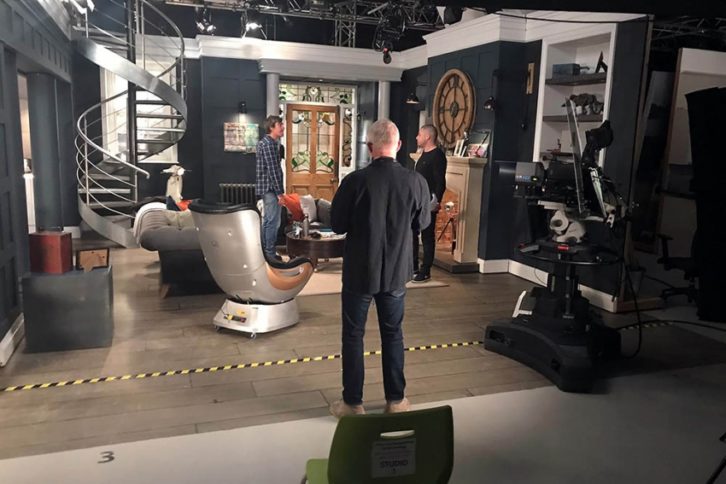
The scripts are calling for more use of domestic sets. Where a scene does need to involve more than three people, these will be shot as two conversations in isolation and stitched together in the edit to create the appearance of one scene. “The cast members will still be exercising social distancing in the scene; it just helps us manage those on the floor and gives everyone space to perform. Some of the sets are quite compact, so to help we have reduced to single camera working when required. That keeps crew numbers to a minimum.”
Before shooting restarted, Mabadi and the production’s Health & Safety risk manager assessed each set and decided that some were too compact to be used during the time of restrictions.
Being creative
As far as camera moves are concerned, Mabadi says that these will be a little less dynamic in order to social distance. “Luckily, our camera teams are still being very creative with their lens work. We have reduced down from three to two cameras in studio. A lot of our location grip equipment requires two people to operate safely, track and dolly, ladder-pod etc – so we have had to impose some restrictions.”
While those restrictions are in place, programme directors will work from the floor, rather than the gallery. Only the vision operator and script supervisor can be safely accommodated in the production control room. They will be seated more than two metres apart with a Perspex shield separating them as an additional safety measure.
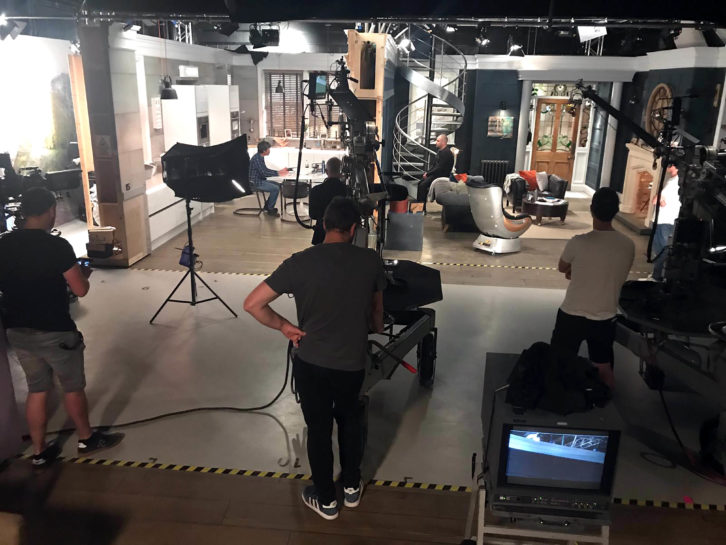
Although all cameras are ISO’d, previously, a vision mixer would also produce a guide cut version of each scene. However, for the time being this practice has been dropped. “As we are only using two cameras and reducing the gallery down to two people, we have created more flexibility on the studio floor to concentrate on our safety measures. We want to avoid scheduling pick-ups if possible so the more raw data we have the better.”
He goes on, “We have stopped all guest location filming. We will only be filming at the Emmerdale Village or extensions of the Village over which we have complete control of and can implement our risk management strategy.”
Remote resources
Editing, using Avid Media Composer, is carried out both within the Leeds studio facility and remotely from home locations. “We have facilities and infrastructure so that the editor and director can work collaboratively from adjacent suites at the centre,” explains Mabadi. With home editing, we are using laptops as a remote control for the edit suites in the Leeds facility. The machines there still do all the heavy ingest, so we don’t ever run the insurance risk of physically taking any rushes out of the building.”
He says that directors, editors, producers and production have all been utilising Google Meet, Zoom and many other video conferencing software.
“Grading and dubbing will still be done at Leeds due to the more dedicated control surfaces and the controlled environment required, such as lighting and a sound proof room. These are single occupancy rooms and lone roles.”
Mabadi concludes, “It is testing us in new ways and asking us to think differently about how we tell stories. The scenes feel like short plays, there are no visual extravagances just the stage, the characters and the storyline. Maybe a new filmic ‘language’ has uttered its first words!”


